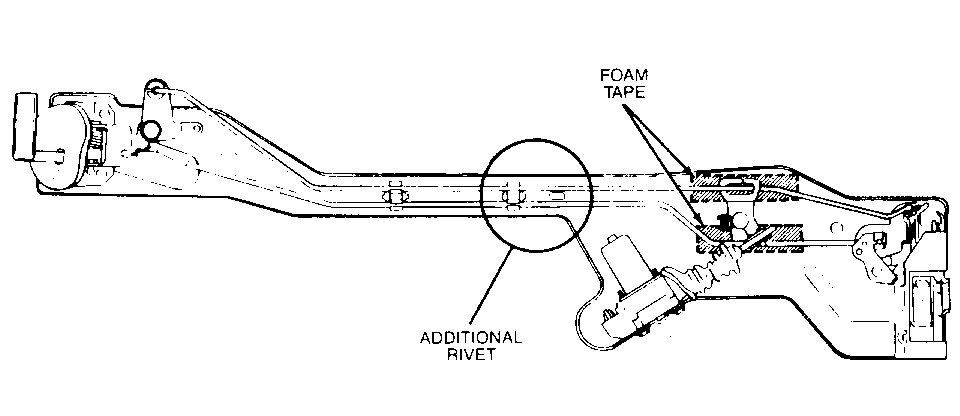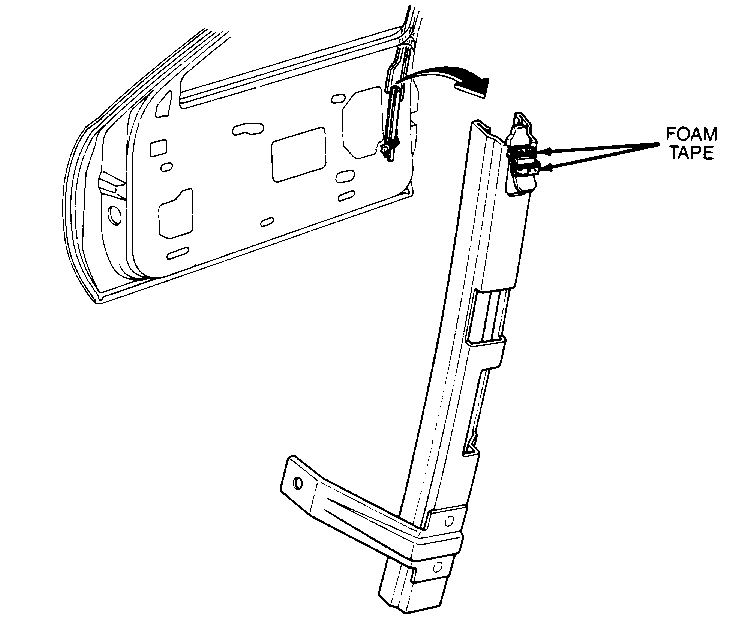DOOR LOCK MODULE RATTLE (INSTALL NEW RIVET)

VEHICLES AFFECTED: 1990 E, K
This bulletin is being revised to change the title and to add two new procedures and art for Oldsmobile.
CADILLAC AND BUICK ONLY
Some 1990 E/K may experience a condition of a rattle from the front door during closing. This condition may be caused by loose rivets securing the lock module to the door inner panel.
To repair this condition use the following procedure:
1. Remove the door trim panel and noise suppressing foam pad.
2. Drill and insert an additional 3/16" x 1/8" rivet to the locations specified on the attached artwork. Refer to Figures 1 and 2.
3. Install the door trim panel and noise suppressing foam pad.
OLDSMOBILE ONLY
Some 1990 Toronados may experience a condition of a rattle from the front door during closing. This condition may be caused by any one of the following:
Lock module rattle Lock rod to lock module rattle Rear glass run channel rattle
Remove the door trim panel and plastic water deflector paper and diagnose the source of the door rattle.
To repair the lock module rattle condition use the following procedure:
1. Drill and insert an additional 3/16" x 1/8" rivet to the location specified in Figure 1.
2. Install the plastic water deflector paper and install the door trim panel.
To repair the lock rod to lock module rattle condition use the following procedure:
1. Install 3/4" x 1/8" foam tape, 3M P/N #021200-06370 or equivalent to the areas shaded in Figure 1.
NOTE: Ensure that the module surface is clean and dry before applying the foam tape.
2. Install the plastic water deflector paper and install the vent.
To repair the rear glass run channel rattle condition use the following procedure:
1. Remove the rear glass run channel using the removal procedure on page 10-6-14 of the Oldsmobile Trofeo/Toronado Service Information Manual.
2. Using 3/4" x 1/8" foam tape, 3M P/N #021200-03670 or equivalent, wrap the upper retaining hook as shown in Fig. 2.
3. Install the rear glass run channel using the installation procedure on page 10-6-15 of the Oldsmobile Trofeo/Toronado Service Information Manual.


General Motors bulletins are intended for use by professional technicians, not a "do-it-yourselfer". They are written to inform those technicians of conditions that may occur on some vehicles, or to provide information that could assist in the proper service of a vehicle. Properly trained technicians have the equipment, tools, safety instructions and know-how to do a job properly and safely. If a condition is described, do not assume that the bulletin applies to your vehicle, or that your vehicle will have that condition. See a General Motors dealer servicing your brand of General Motors vehicle for information on whether your vehicle may benefit from the information.
